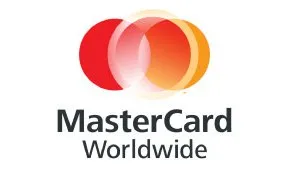
Maximizing benefits of card networks
MasterCard reveals pieces of advice for companies on getting the pros and hedging the cons on key banking trends.
The potential of utilizing payment card networks in reducing friction in the financial supply chain remains untapped. This is the case as well with regards to purchase-to-pay procurement processes of enterprises of all types, sizes, domestic, and cross-border, according to Michael Angus, Group Head, Payments Strategy of MasterCard Advisors.
Edge of using payment card networks
There are always two sides to a coin, and such is the case with payment card networks. “The advantage is that it’s really global, it’s fast, and lastly, it’s a new network which means that we can attach and, at the same time, track a lot of information,” Angus explained. The advantages in the financial supply chain efficiency are two-fold.
‘’One, if you look at how cost is generated in the financial supply chain, the payment itself is a very small part of it,’’ he noted.
Most of the costs flows into the initiation of the payment and into the reconciliation of the said payment after it is received. Although some exceptions happen,
Angus remarked, like when it goes from being straight through electronic to manual interventions.
Secondly, said Angus, the network that the cards have is a global one. Its global hub-and-spoke network, so it’s inherently simpler than many of the cross-border networks.
Managing changes in treasury services
“This is actually the question that a lot of banks are wrestling with right now,” Angus revealed. These banks are starting to hear from their customers that they like products that are based on the card infrastructure, commercial cards, and T&E cards among others. And these are integrated with the offerings that the transaction banks are making at present, he added. In effect, a lot of banks around the world are trying to figure out how to offer these things.
‘’They realize very early on that it has to be a very integrated offering,” he further explained. Angus bared that the trick to this is that many of the card network solutions have grown up separately.
“They have often grown up in the retail part of the bank, because that is where the scale is, thus, that’s where efficiencies can be gained so they sort of bloom in a certain way,” he elaborated.
Card networks also make money in different ways than any other transaction banking products.
Consequently, he said, bringing all those together can sometimes cause friction and some change that management skills are required to consolidate them. ‘
’First thing that’s important is to get them to understand how they value each other,” he reminded companies.
Second thing, he added, is to put a clear set of matrix in place that would allow them to both optimize their way of doing their businesses.
Dangers of co-location
More and more banks are locating their commercial card operations within their very own treasury services reporting line because, according to Angus, they have common clients and there is the thriving need to offer transaction solutions. However, he warned that the culture and professional vocabulary of transaction banking and that of the cards business are very different.
Angus admitted, “Some of the risks in doing it are putting people that both had successful businesses together when their businesses are different.” Unless these establishments understand how a successful sales process works, how each other makes money, how they affect each other, there can be some frictions.
Some things may show up, as Angus put it, ‘hiccups’ may get in the way for the corporate clients. He advised that eliminating these is the real issue and that banks must focus on it.
MasterCard in Sibos 2012
As first-time participants, MasterCard’s primary aim as Angus explained, is to hear from corporate banks and transaction banks on the ways with which they can work together for solutions.
“We’re hoping for more to listen to and get ideas from, but we’re more importantly looking at network with mobile,” he said.
A lot of energy is being spent on mobile point of sale, he added, and that there is a number of partners MasterCard is working with through simple and efficient ‘mobile point of sale.’ “It’s a long way, but we are hoping to develop it,” Angus admitted.




![Lorem Ipsum [ABF 1]](https://cmg-qa.s3.ap-southeast-1.amazonaws.com/s3fs-public/styles/exclusive_featured_article/public/2025-03/a_hand_pointing_to_a_futuristic_technology_5b87c9d0e3_1.png.webp?itok=2w0y1WhS)


![Cross Domain [Manu + SBR + ABF + ABR + FMCG + HBR + ]](https://cmg-qa.s3.ap-southeast-1.amazonaws.com/s3fs-public/styles/exclusive_featured_article/public/2025-01/earth-3537401_1920_4.jpg.webp?itok=WaRpTJwE)







 Advertise
Advertise

